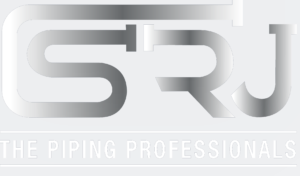When Sprinklers Fail: 3 Industrial Fire Disasters and Their Root Causes
Catastrophic case studies revealing how sprinkler system failures led to devastating industrial fires - and how they could have been prevented
Fire sprinkler systems are designed as the last line of defense against industrial fires, but when they fail, the consequences can be catastrophic. At SRJ Piping India, we've analyzed hundreds of fire incidents and found that most sprinkler failures stem from preventable causes. This article examines three devastating industrial fires where sprinkler systems failed, their root causes, and crucial lessons for facility managers.



Case Study 1: Textile Factory Fire (2019)
Shree Textiles Mill
Surat, Gujarat | January 22, 2019
A devastating fire swept through a 150,000 sq. ft. textile manufacturing unit, causing ₹50 crore in damages and halting operations for 10 months. The facility's outdated sprinkler system failed to activate during the fire's early stages.
Damages
₹50 crore
Downtime
10 months
Jobs Lost
450 temporarily
Insurance Impact
250% premium increase
Root Causes of Sprinkler Failure:
Failure Timeline:
Case Study 2: Chemical Plant Explosion (2021)
Bharat Chemicals Ltd.
Vapi, Gujarat | June 14, 2021
An explosion at a chemical manufacturing plant killed 4 workers and injured 15 others. The plant's foam-based fire suppression system failed to control a solvent fire, leading to multiple secondary explosions.
Fatalities
4 workers
Injuries
15 (5 critical)
Evacuation Radius
1.5 km
Environmental Fines
₹3.8 crore
Root Causes of Suppression Failure:


Case Study 3: Electronics Manufacturing Fire (2023)
TechTrend Innovations
Bengaluru, Karnataka | April 9, 2023
A fire in an electronics assembly unit, originating in a soldering station, spread rapidly when the facility's sprinkler system failed to activate, causing ₹80 crore in damages.
Damages
₹80 crore
Production Loss
25,000 units
Supply Chain Impact
2 OEMs affected
Stock Price Drop
18% (1 week)
Root Causes of Sprinkler Failure:
Failure Timeline:
Failure Timeline:
Common Themes in Sprinkler System Failures
Design Flaws
Present in 78% of major failures
Maintenance Issues
Found in 65% of cases
Improper Modifications
Factor in 53% of incidents
Human Error
Contributes to 41% of failures
Our analysis of these and other industrial fires reveals consistent patterns in sprinkler system failures. The most common vulnerabilities include:
- System design that doesn't match current hazards (common after facility expansions or process changes)
- Deferred maintenance leading to corrosion, blockages, or impaired functionality
- Improper installation or modifications made without engineering review
- Inadequate water supply for the protected area's size and hazard classification
- Lack of regular testing to verify system readiness
How to Prevent Sprinkler System Failures
Based on our forensic investigations and NFPA standards, these measures can significantly reduce the risk of sprinkler system failures:
Conduct Regular Hazard Assessments
Re-evaluate your sprinkler system design whenever processes, materials, or facility layouts change. A professional fire protection audit can identify gaps.
Implement Strict Maintenance Protocols
Follow NFPA 25 standards for inspection, testing, and maintenance. Our annual maintenance program includes comprehensive sprinkler system checks.
Train Staff on System Limitations
Ensure personnel understand what your sprinklers can and cannot protect against, and when to initiate manual suppression.
Upgrade Aging Systems
Systems older than 20 years often can't handle modern fire loads. Consider retrofitting with modern ESFR or mist systems.
Verify Water Supply Adequacy
Regularly test water flow rates and pressures to ensure they meet design specifications, especially after municipal water system changes.
Don't Wait for Disaster to Strike
SRJ Piping India's fire protection experts can evaluate your sprinkler system's reliability and recommend improvements to prevent catastrophic failures.
